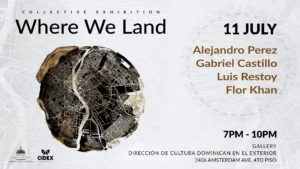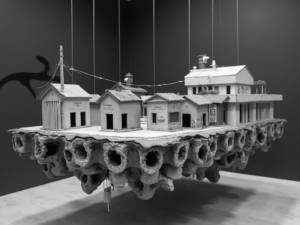By Juan Butten
Since I began researching and delving into my most recent work nearly seven years ago, I have always seen art as a powerful tool for reflection and social criticism, without the need to belong to any political organization, simply as a free thinker. That is why I use marginalization as a fundamental theme in my work; it is the best spearhead to provoke thought.
In the contemporary context, I have noticed that the relationship between art and politics has intensified, giving rise to projects that address current social and political issues in innovative and provocative ways. From activism to cultural criticism, art has become an essential means to bring visibility to problems affecting entire communities and to challenge dominant narratives.
Artistic activism, in my view, arises from the need to generate awareness and promote social change. I have seen artists from various disciplines use their work to address issues such as inequality, racism, gender violence, and human rights. One example that impacted me is the feminist artist collective Las Tesis, with their famous performance “A Rapist in Your Path.” This work has used art as a vehicle to denounce gender violence and demand justice. Its replication in various cities around the world demonstrates how art can mobilize the masses and generate crucial dialogue about violence against women.
Similarly, the work of artist Ai Weiwei has caught my attention. His critical approach to the Chinese regime and his defense of human rights are clearly reflected in his works. From installations to documentaries, Ai uses art to challenge political injustices and give voice to those who are silenced. His piece “Law of the Journey,” which represents a raft of migrants, invites reflection on the refugee crisis and the dehumanization they face in their search for a better future.
Art also acts as a mirror of culture and society, and I have noticed that it reflects the tensions and contradictions present in the contemporary world. Projects that address cultural criticism can explore themes such as consumerism, globalization, and identity. One example that strikes me is the Mexican artist Teresa Margolles, who uses her work to explore the consequences of violence in Mexico. Her installations, which include objects and materials that have been in contact with death, invite viewers to confront the brutality of the reality many communities face.
The work of Banksy, an urban artist who has brought social criticism to the streets, also seems significant to me. His murals address issues such as war, poverty, and consumerism in a direct and often satirical way. One of his pieces, “Girl with a Balloon,” which shows a girl trying to reach a heart-shaped balloon, is interpreted as a critique of materialism and the loss of innocence. Banksy’s art resonates with a wide audience, bringing complex issues into the public sphere and fostering discussion.
The advancement of technology has opened new possibilities for political art, and I find it fascinating how projects that use social media, video art, and digital platforms allow dissenting voices to be heard more powerfully. The artist and human rights activist Nadya Tolokonnikova, from Pussy Riot, uses social media to disseminate protest messages and mobilize support for various causes, from freedom of expression to LGBTQ+ rights.
Interactive installations and digital art have also emerged as effective forms of activism. Projects like The New Normal, which uses augmented reality to address the climate crisis, allow viewers to interact with the work in ways that encourage reflection and engagement. These new forms of art not only inform but also invite action, empowering the viewer to become an agent of change.
Ultimately, I see the intersection of art and politics as fertile ground for exploring current social and political issues. Through activism, cultural criticism, and new forms of expression, art has become an essential vehicle for giving voice to injustices and promoting social change. In a world where social crises are becoming increasingly visible, art invites us to confront uncomfortable realities and participate in a dialogue that transcends borders. In the end, I believe that political art not only reflects society but also has the potential to transform it, inspiring current and future generations to fight for a fairer and more equitable world.









